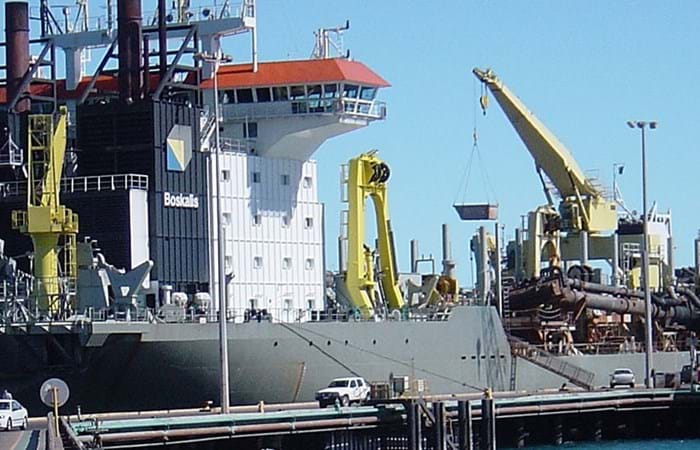In order to increase the production capacity from the gas condensate fields located off the North West Coast of Western Australia, Woodside Energy Limited, on behalf of the North West Shelf JV Participants, has realized the installation of a multiphase subsea 42" pipeline. The new trunkline supplements an existing 40" pipeline, which conveys gas/condensate from the North West Shelf fields - North Rankin, Goodwyn and Cossack/Wanaea - to onshore treatment facilities located on the Burrup Peninsula near Dampier, Western Australia.
The trunkline, 135 kilometers long, has been installed by Saipem (Portugal) Comercio Maritimo Sociedade Unipessoal LDA. Boskalis Offshore was subcontracted for the dredging and backfilling works of two trench stretches, in all 25 kilometers long. Work commenced in November 2002 and was completed 11 months later, inclusive of project preparation and interim demobilisation. The 3-meters deep TSEP pipeline trench required the excavation of around 900,000 m3 of material in water depths up to 55 meters. Within three weeks, the works were executed by the Trailing Suction Hopper Dredger Queen of the Netherlands under challenging conditions of offshore working environment, seabed soils, strict technical specifications and the sensitive underwater environment. This demanded thorough preparation of vessel, crew and clear working procedures to guarantee safe, sound and efficient completion of this part of the job. The irregular seabed in combination with the pipe(-lay) characteristics and backfill specifications dictated a narrow pipeline alignment. Four trench transition zones were defined as well. This imposed the need for a detailed dredge plan and round-the-clock survey support, both crucial means to ultimately avoid delays to the dredger. DP/DT, the suction pipe positioning measurement and the dredge process control systems were indispensable features on board.
